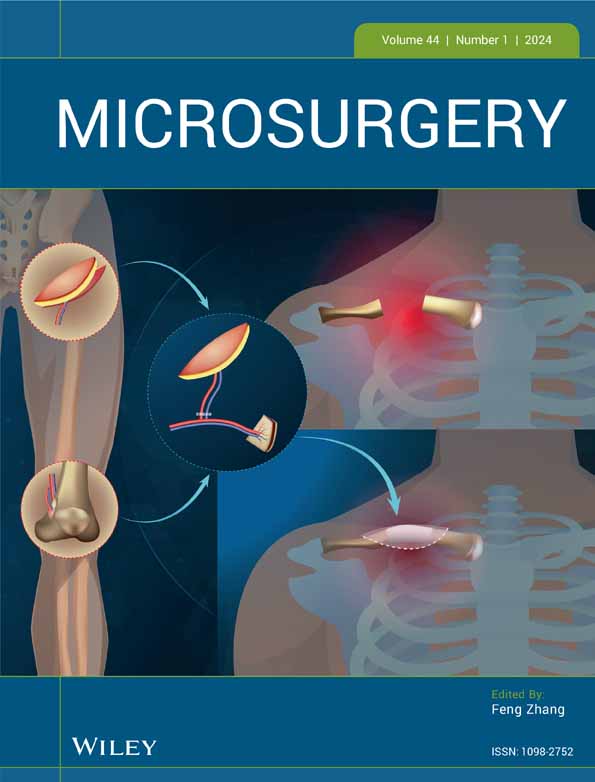Reversed distal laterodigital adipofascial flap for nail-bed reconstruction
Abstract
Background
Lesions of the distal phalanges of the fingers frequently involve the nail bed. There are few therapeutic options for nail-bed reconstruction and they often lead to painful scars and onychodystrophy. We present our experience with the distal adipofascial laterodigital reverse flap.
Methods
Fifteen patients (average age 46.33 years, range 28–73) with tumors or traumatic injuries (crush injuries, nail avulsion, and partial fingertip amputations) of the nail bed, underwent digital reconstruction through the distal adipofascial laterodigital reverse flap from June 2018 to August 2019. The size of the fingertip defect covered with the flap was ranged between 1.1 × 1.1 and 1.6 × 1.2 cm (average size 1.4 × 1.2 cm). The flap was harvested enrolling subcutaneous tissue from the lateral aspect of the middle and distal phalanx from the less damaged side.
Results
The average size of the harvested flaps was 1.3 × 1.2 cm (range 1.1 × 1.0 to 1.4 × 1.1 cm). All adipofascial flaps survived entirely and the nail bed healed in all patients, with an average healing time of 21 days and a subsequent regrowth of the nail. The follow up ranged from 6 to 12 months, with a mean of 7 months.
Conclusions
The distal reverse adipofascial flap provides a very versatile and reliable coverage of the distal finger and its nail bed. It is a rapid and reproducible surgical procedure with poor morbidity for the donor site.
Level of Evidence
IV.
CONFLICT OF INTEREST STATEMENT
The authors declare no potential conflicts of interest with respect to the research, authorship, and/or publication of this article. The authors who have taken part in this study declare that they do not have any commercial associations that might pose or create a conflict of interest with information presented in this article.
Open Research
DATA AVAILABILITY STATEMENT
Data sharing is not applicable to this article as no new data were created or analyzed in this study.




